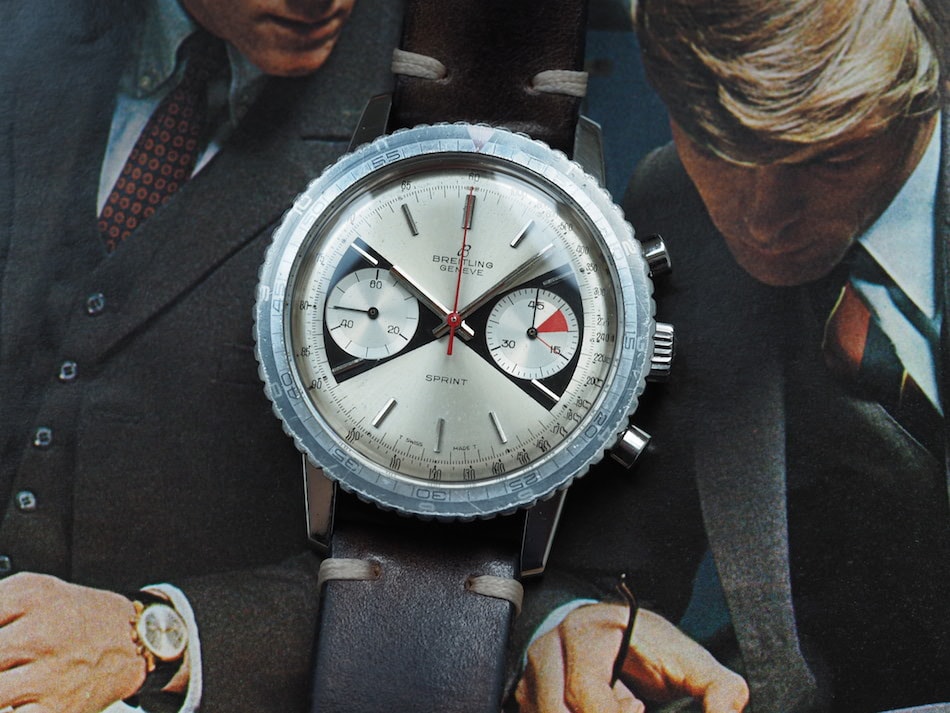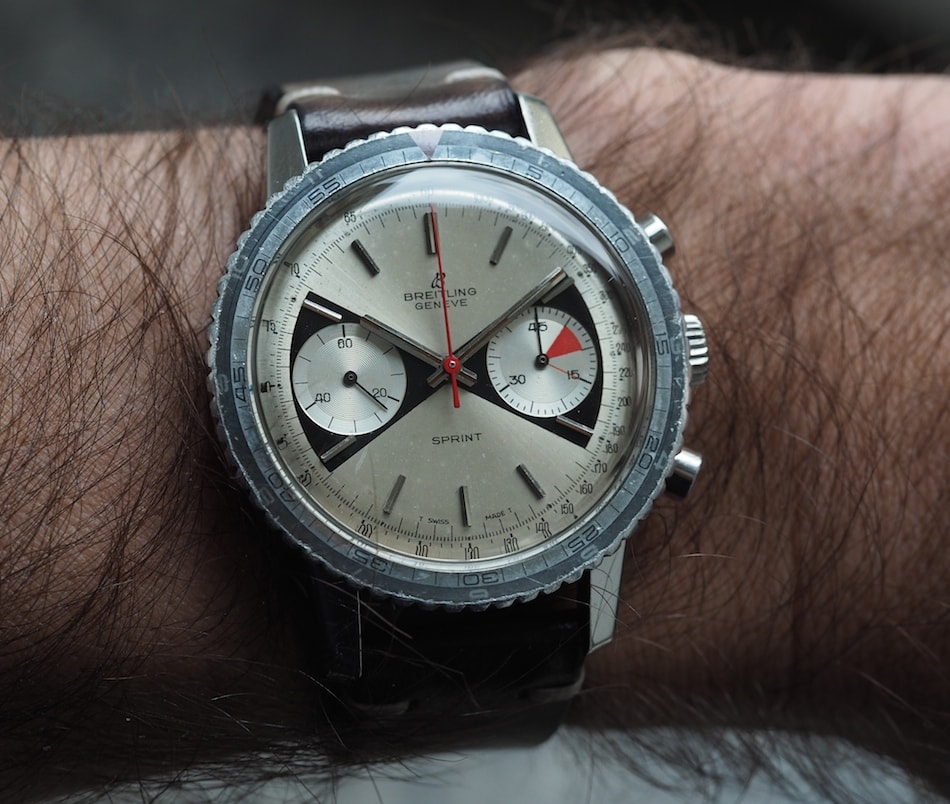#TBT Breitling Sprint 2010, A Value Play on the Vintage Scene
If you’re at all active on Instagram, then you’ve likely noticed some things going on around the Breitling brand. First, a couple Saturdays ago, there was the #LegendaryFuture event where Breitling collectors posted pictures with their favorite chronographs from the brand. Alongside this, Breitling showed hints of an upcoming line on their feed. Then, last week, events in Asia debuted the new Breitling Navitimer 8 series. We’ll get a chance in a week’s time to see these pieces in Europe when Breitling continues its roadshow combining a museum-like display with the new pieces. For now, though, we’ll continue to examine the brand’s heritage in our recurring #TBT series. Today’s episode focuses on a model with a well-known dial, the Breitling Sprint 2010.

We’ve featured a decent amount of Breitling within #TBT. Frankly I like them and it seems that the rest of the vintage market has woken up to them as well. The designs tend to be iconic, ahead of their time, and of high quality. There’s also the fact that Breitling essentially made chronographs their business and introduced models ahead of most brands we often associate with the sub genre of watch. So, yes, it took some serious time for recognition to arrive, but it now seems to be here in relatively full force. With that, a look at the Breitling Sprint 2010 is appropriate because it’s one of the last opportunities to buy a larger rotating bezel model for a decent price – if you consider roughly $3,000 to be attractive. And as an aside, I’ve set most of these pictures against a late 1960’s Breitling catalog (sent by the brand’s official US distributor at the time, Wakmann) that I bought at the NAWCC library for a few bucks. I think you’ll agree, the “lifestyle” shots are, ahem, amazing.

When introduced in 1967, the Breitling Sprint 2010 was marketed as somewhat of a entry level watch. With only two registers and a cam-operated Valjoux 7733, it was a less costly alternative to the tri-register Venus 178-powered chronographs such as the 765 CP, Navitimer and even the Top Time. Functionality wise, though, with its inner tachymeter track and rotating dual-use bezel that could accrue hours in lieu of the third register or show a different time zone, the Sprint was pretty impressive.

During its production run until roughly 1970, the Breitling Sprint 2010 came with either a reverse panda dial or the odd configuration you see here. It’s not quite a reverse panda, but it goes by several nicknames. Batman, Zorro, and Bowtie are the most popular nomenclatures. The cases were in stainless aside from a gold-plated version sans bezel. It should be known that other Sprints existed at the time, but came with a rather futuristic c-case and carry the reference 2214. All are worthy of going after, but I definitely have a thing for rotating bezels and the opportunity to add somewhat of an exotic dial is always appealing.

As the poor-man’s way to enter Breitling in the late 60’s (these cost $120 in the late 60’s on leather strap and another $15 for an NSA bracelet), it seems that the Breitling Sprint 2010 went largely ignored by most collectors up until a couple years ago and that’s a bit odd. The Sprint possesses a rather beefy case of 38mm, has a lug-to-lug distance of 48mm and wears a 19mm strap. These are modern numbers and with a bezel that brings the case diameter to a nearly even 40mm, it’s extremely wearable. Plus, the thickness of this chrono comes to a relatively slender 12.5mm and that makes it extremely wearable.

Coming back to the dial on the Breitling Sprint 2010, I find it very unique amongst my collection and it belongs in the experimental category along with oddities like the Bulova “Surfboard” dial chronograph. Yes, there were some strange substances floating around in the late 60’s indeed! On this example, you can see that the dial has taken on some patina and most of the lume has aged to black.

Perhaps it was moisture, but I’d simply chalk this watch up to receiving serious use. Amazingly, most of the lume pips still exist outside of the applied markers and the red central hand and dial features show brightly. Yes, there’s a decent amount going on here, but it all comes together nicely. The bezel, on the other hand has faded well into the territory of what Rolex people term as “ghost” and that just adds to the well-used look. By the way, if this were a Rolex bezel, it would be seriously desirable. On a Breitling, it’s just faded.

The Breitling Sprint 2010 is fitted with typical pump pushers and a signed crown that actually strikes me as a bit too small. The latter detail is odd as Breitling sure seemed to like a variety of crown sizes and I have no idea why they chose this flavor. The case reminds me a little of the Wakmann Big Boy we’ve reviewed and also of the compressor case Heuer Autavias. All of this is fine, but in what was likely a concession to cost, it lacks the finery such as chamfers that I’ve come to enjoy on other Breitling models of the era.

I purchased this watch from Andreas at Localtime some time within the past couple years. It was priced fairly, but even then it had started to climb well over the historic sub-$1000 levels I took for granted. I knew that the watch needed some fairly serious work, but thankfully the Valjoux 7733 is a relatively easy movement in terms of parts. Today, as mentioned, a decent Breitling Sprint 2010 starts at around $3,000 and I’ve seen prices as high as $5,000. They’re not uncommon, but during the vintage watch run-up, they’ve become more desirable like most things. Still, I’d hold out for a fairly priced example. Pitfalls to avoid are those with missing bezels, pushers or incorrect hands. Parts do show up but it’s becoming infrequent.

The Breitling Sprint 2010 is certainly one of the brand’s most popular historic models, but even today, it’s a great way to get into a well-known marque for a fair price. As mentioned, the watches wear very well, contain a robust and easy to service movement, and they even stand out in a crowd. Who knows what Breitling will bring us over the next year or two, but let’s hope for an entry level vintage-inspired piece like the Sprint.










